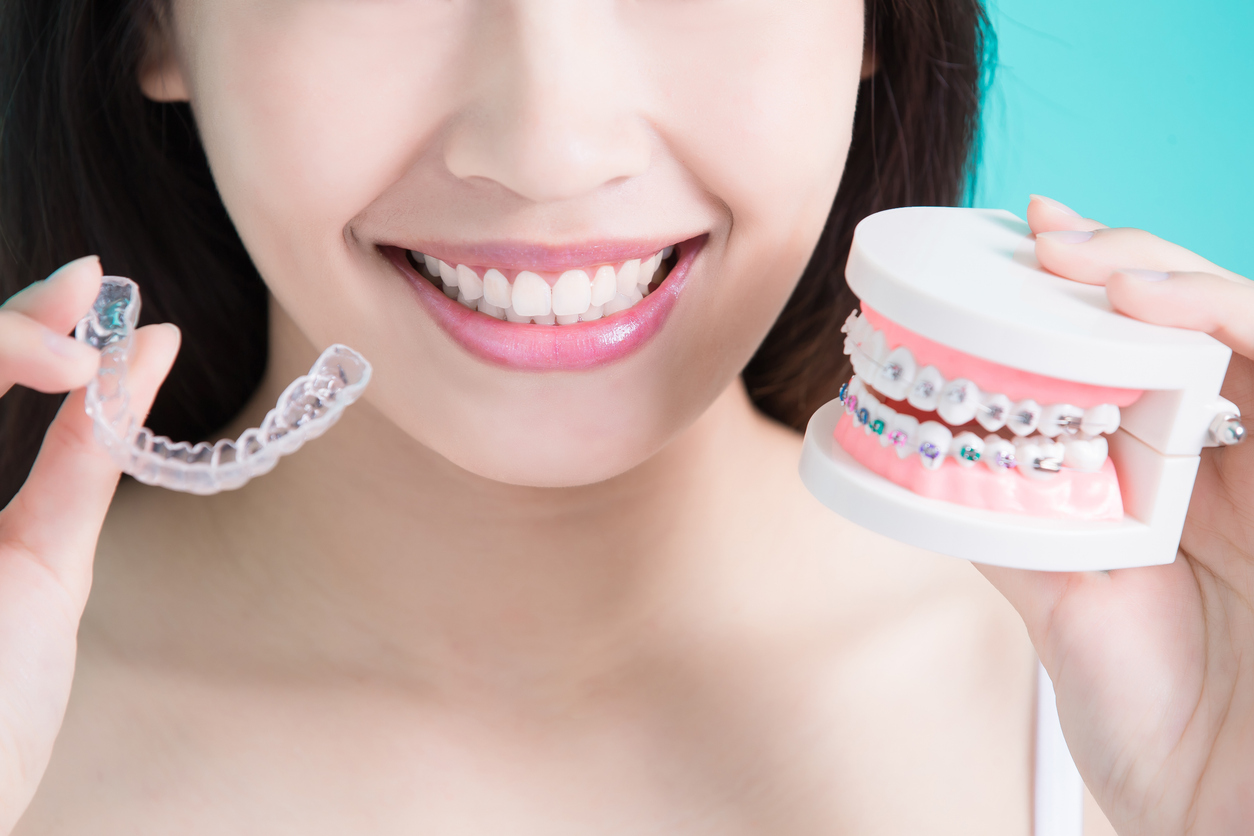What are the Different Types of Orthodontic Treatments?
Nowadays, there are a variety of options available for patients who want to straighten their teeth and boost the appearance of their smile. In this article, we discuss different types of orthodontic treatments, concentrating on the most common options.
What are the Different Types of Orthodontic Treatments?
Traditional Braces
Traditional braces typically consist of metal wires, bands, and brackets. The latter are attached to each tooth with a special bonding substance and connected by wires. Braces work by applying pressure to the teeth and thus gradually moving them into a desired position. Traditional metal braces are an effective treatment for patients of all ages. In some cases, if a patient does not have enough room in the mouth for the teeth to be aligned properly, some of the back teeth can be removed to create space prior to the orthodontic treatment.
Advantages of traditional metal braces include:
- Traditional braces are a highly efficient and reliable method of treatment. They are made of a highly durable metal and, therefore, can withstand significant pressure and move even severely overcrowded or crooked teeth.
- Traditional braces can successfully treat a wide range of orthodontic issues, such as overbites, underbites, gaps between teeth, overcrowded teeth, etc.
Unfortunately, traditional braces can have several disadvantages:
- Treatment with traditional braces requires frequent visits to the dental office for adjustment.
- Some patients find metal braces uncomfortable since they can rub the soft tissue in the mouth.
- It can be challenging to brush and floss your teeth with braces, and some patients might require additional tools, such as a water flosser, a floss threader, or an interdental brush to maintain clean teeth.
- Due to the possibility of insufficient oral hygiene, some patients might develop cavities during an orthodontic treatment with braces.
- In some cases, brackets that are attached to the teeth can leave stains on the teeth after they are taken off.
- Traditional braces are noticeable in the mouth when you talk or smile.
- Wearing braces might come with specific dietary restrictions, as you must avoid certain foods to ensure you do not damage them. For example, dentists recommend people with traditional braces abstain from any hard, crunchy, or sticky foods that can stick to the braces or warp the metal.
Lingual Braces
Lingual braces, also known as hidden braces, are attached to the inner side of your teeth. Otherwise, they are very similar in appearance and mechanics to traditional braces.
Advantages of lingual braces include:
- Lingual braces are not noticeable in the mouth, which can be crucial for some patients.
- Lingual braces are generally effective for treating a variety of orthodontic issues.
- Lingual braces do not rub the inner side of your cheeks and lips (however, they still can rub the tongue.)
- Even if lingual braces cause teeth discoloration, it will not be noticeable when you talk or smile.
Disadvantages of lingual braces include:
- Lingual braces are more expensive than traditional braces because they require more control and precision from your dentist.
- Lingual braces can be hard to adjust to. They might cause a lisp, especially at the beginning of the treatment.
- Lingual braces might not be as effective as traditional braces in some cases of severe orthodontic issues.
- Lingual braces might pose even more difficulty with brushing and flossing your teeth than traditional braces.
Ceramic Braces
Ceramic braces are very similar to traditional braces. The main difference is that the brackets are made of tooth-colored ceramic material rather than metal and are less noticeable in the mouth. Consequently, ceramic braces are typically more expensive than traditional metal braces.
Clear Aligners
Clear aligners, or Invisalign, are becoming more and more popular. Many people opt for the trays made from transparent plastic instead of traditional braces due to several advantages of this treatment method:
- Clear aligners are much less noticeable in the mouth compared to traditional braces, as they are fully transparent and smooth.
- It is much easier to maintain oral hygiene with clear aligners, as you can remove them when brushing and flossing your teeth. As a result, there is less risk of developing tooth decay or gum disease while completing this orthodontic treatment.
- It is easy to clean the aligners.
- Having meals is less challenging and more enjoyable when wearing clear aligners, as you remove them when eating. Thus, you can enjoy a wide range of foods, including hard foods or crunchy foods.
Clear aligners also have several disadvantages:
- Clear aligners work best in more straightforward cases and might not be effective if a patient has severe and complex orthodontic issues.
- Clear aligners require strict discipline and must be worn for at least 22 hours a day to ensure their effectiveness. You can remove them only when eating and brushing your teeth. However, maintaining such rigorous discipline might be challenging for some people, especially when your teeth hurt. So, if you are not sure you can adhere to the recommendations, opt for traditional or non-removable braces.
Make an Appointment Today
Do not hesitate to make an appointment with a full-service dentist at Smiles of Arcadia. During the consultation, we will help you choose the orthodontic treatment method that is most suitable for your case.

